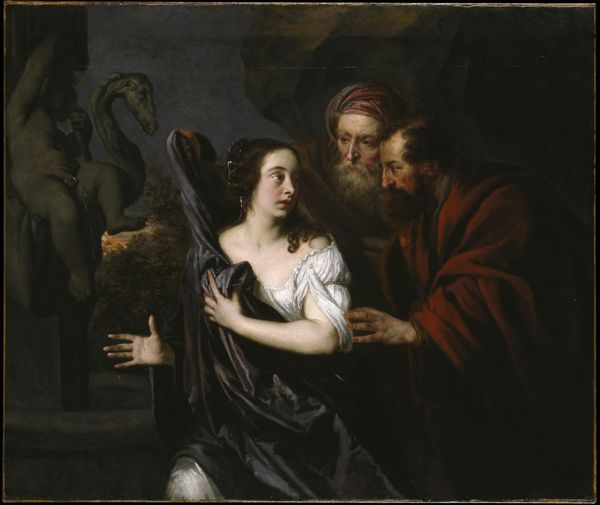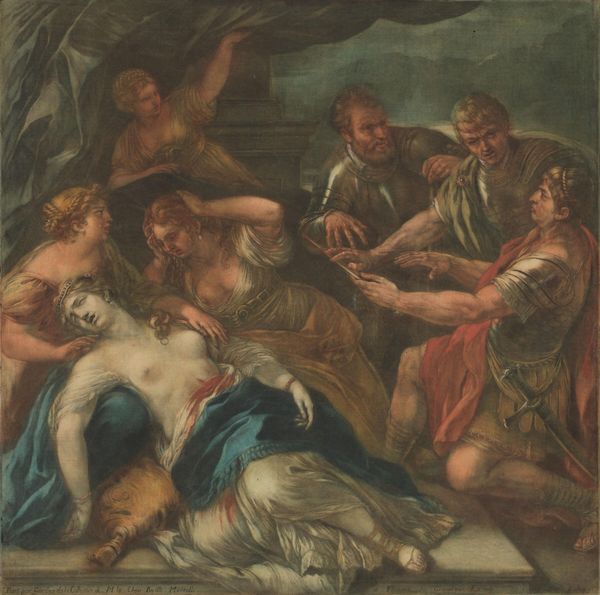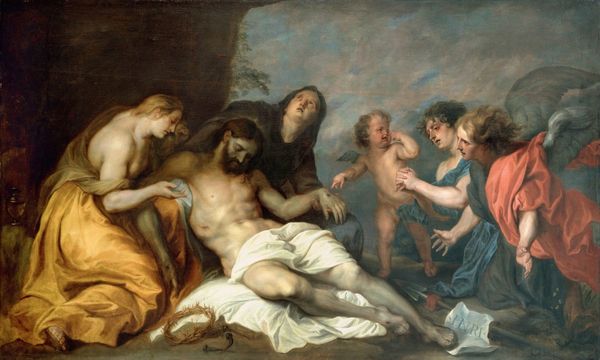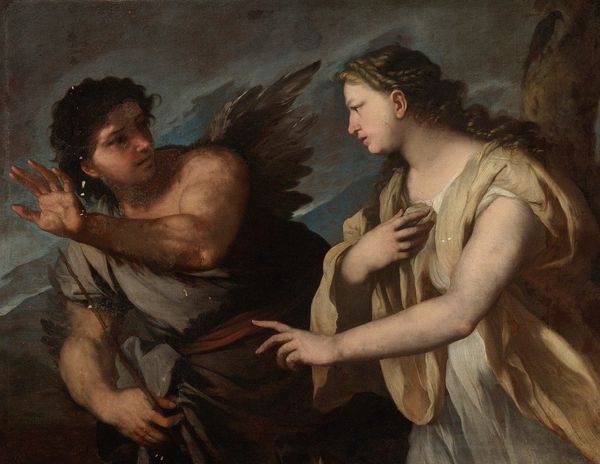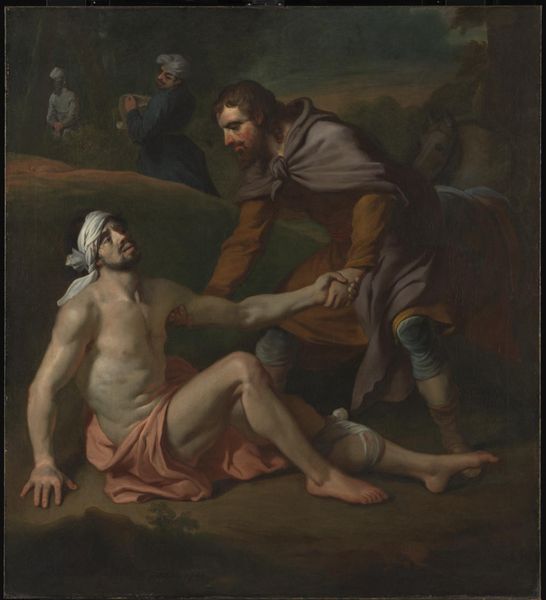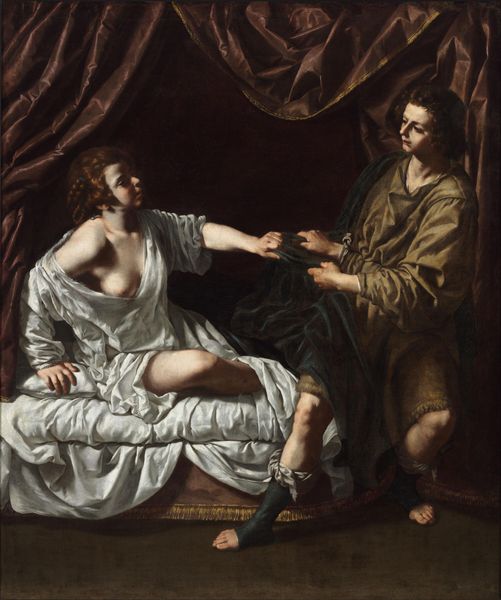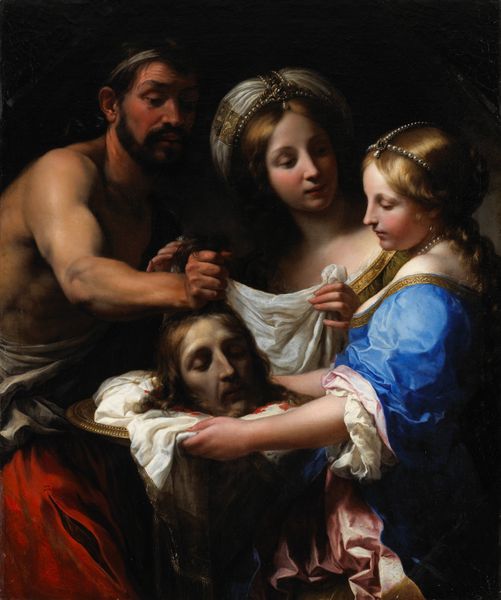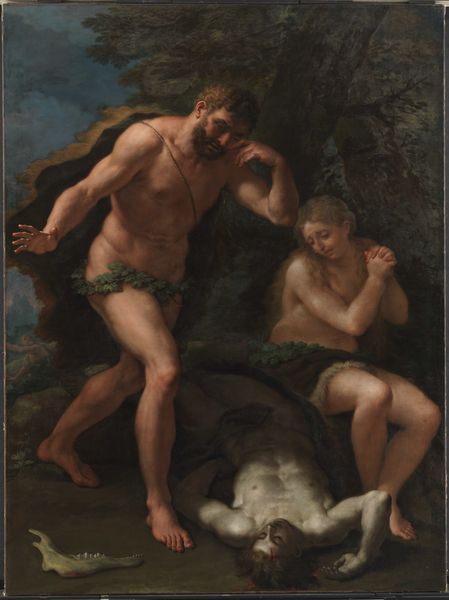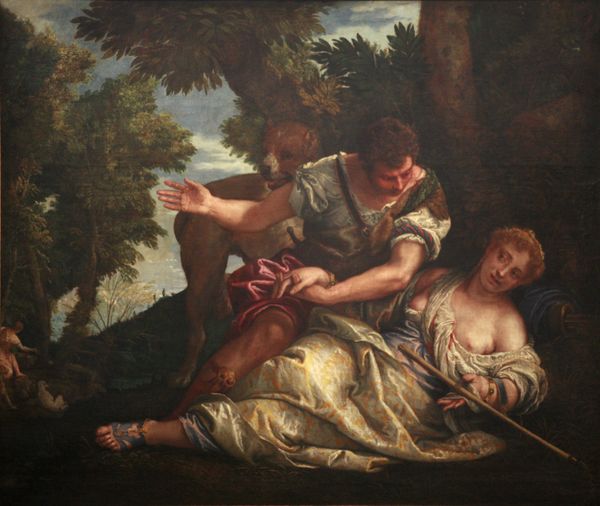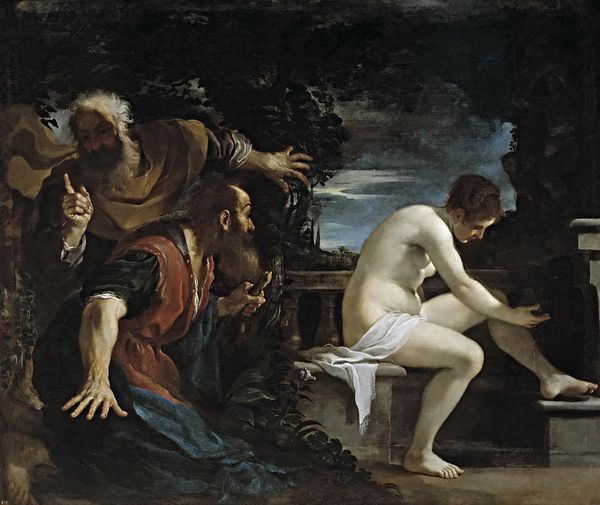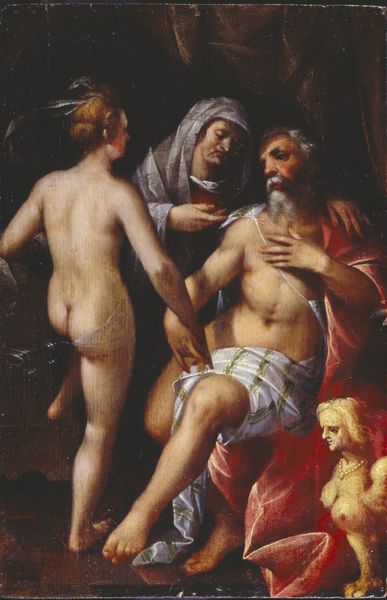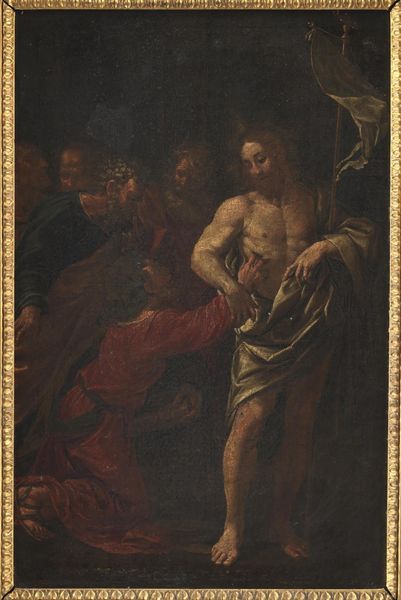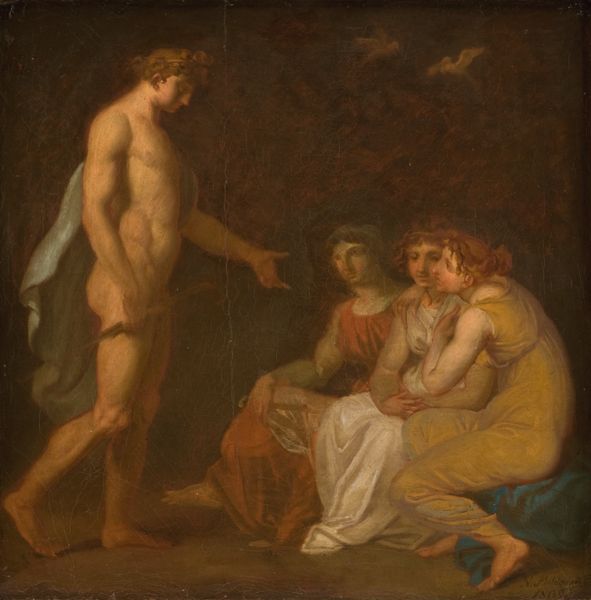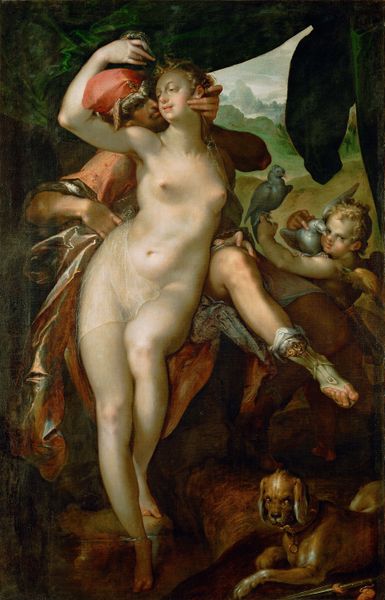
painting, oil-paint
#
portrait
#
narrative-art
#
baroque
#
painting
#
oil-paint
#
charcoal drawing
#
figuration
#
history-painting
#
portrait art
Dimensions: height 131 cm, width 111 cm, depth 8 cm
Copyright: Rijks Museum: Open Domain
Jan Lievens created this rendition of "Samson and Delilah," likely sometime in the 17th century, using oil on canvas. The painting depicts a biblical scene loaded with themes of betrayal, power, and gender dynamics. Here, we see Samson asleep, his head resting on Delilah's lap. Her expression seems to be a mix of alarm and satisfaction as she looks to a man holding shears. This moment signifies not just the cutting of Samson’s hair, his source of strength, but also the broader theme of male vulnerability at the hands of female deception. Lievens was working within a cultural context where women were often portrayed as either virtuous or deceitful. This representation of Delilah is a reflection of those misogynistic stereotypes. The painting’s emotional core lies in Samson’s vulnerability, a powerful man reduced to helplessness, challenging traditional notions of masculinity. How does this betrayal resonate with contemporary understandings of power and vulnerability?
Comments
rijksmuseum about 2 years ago
⋮
Delilah seduced Samson into telling her the secret of his superhuman strength, the source of which lay in his long hair. Lievens painted Samson asleep on Delilah’s lap. She hands a pair of scissors to the frightened man so that he can cut off Samson’s hair. In their early years, Lievens and Rembrandt – who shared a workshop – regularly looked at one another’s work. Rembrandt’s influence can be discerned in the expressive rendering of the faces.
Join the conversation
Join millions of artists and users on Artera today and experience the ultimate creative platform.
